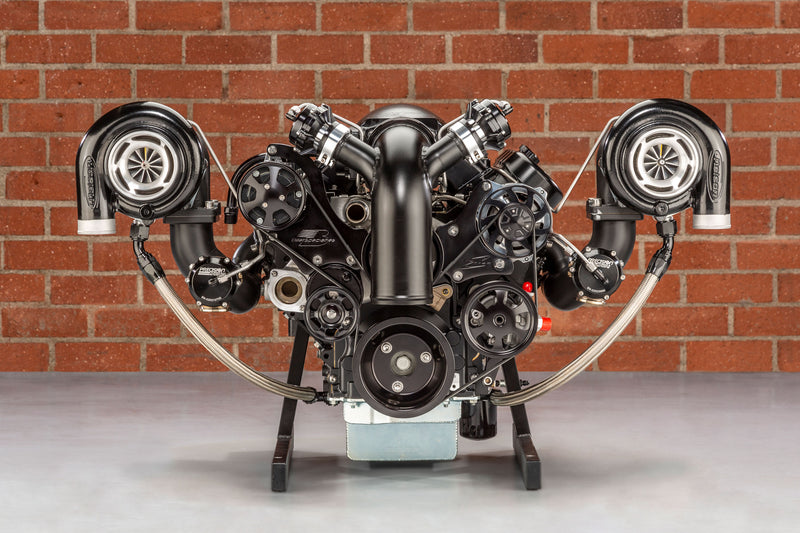Discover Top-Quality Engines for Africa at Our Trustworthy Vehicle Components Store
Wiki Article
The Pursuit for Ultimate Driving Power: Checking Out the Pinnacle of Engine Efficiency and Technological Innovations in the Automotive Industry
In the realm of auto engineering, the pursuit of maximum driving power has actually been a relentless mission that has actually unravelled through the evolution of engine layout and the combination of cutting-edge modern technologies. From the meticulous workmanship of burning engines to the rapid improvements in electrical propulsion systems, the auto industry stands at the cusp of a new age identified by unprecedented performance abilities. As researchers and engineers dig much deeper right into the realms of computational liquid characteristics and explore cutting-edge gas innovations, the perspective of possibilities expands tremendously. Keep tuned as we unravel the elaborate tapestry of technological innovations that are forming the future of auto power and performance.Development of Engine Style

Additionally, the assimilation of turbocharging and supercharging technologies has changed engine design by increasing power without significantly boosting engine dimension. These forced induction systems press the intake air, permitting even more gas to be ignited, thus producing better power output from a smaller sized engine. This improvement has been especially critical in enhancing the efficiency of smaller variation engines while preserving fuel performance criteria.

Performance-Enhancing Gas Technologies
The application of advanced fuel modern technologies has substantially contributed to boosting engine efficiency in modern cars. Biofuels, derived from renewable resources like sugarcane, corn, or algae, deal enhanced and decreased emissions engine effectiveness. In addition, gas ingredients and detergents are being created to clean engine parts, enhance burning, and minimize rubbing, thus enhancing overall vehicle efficiency.Improvements in Electric Propulsion
Significant strides in electric propulsion innovation have actually transformed the automobile market, leading the way for a brand-new age of lasting and effective transport. Electric vehicles (EVs) are getting appeal due to their environmental advantages and advancements in battery technology, enabling longer driving arrays and shorter billing times. Suppliers are investing heavily in r & d to enhance the efficiency of electrical propulsion systems, focusing on increasing power outcome, improving power effectiveness, and decreasing overall weight.One significant innovation in electrical propulsion is the growth of advanced electrical motors that provide higher torque and power thickness, leading to enhanced acceleration and general driving efficiency. Furthermore, regenerative braking systems have been fine-tuned to catch and keep power during slowdown, further improving the efficiency of EVs.
Additionally, the assimilation of smart technologies, such as expert system and predictive analytics, is maximizing the administration of his response electrical propulsion systems, guaranteeing optimal performance under numerous driving problems. These innovations in electric propulsion are improving the automobile landscape, driving the sector towards a much more lasting and energized future.
Impact of Computational Fluid Dynamics
With advancements in electrical propulsion pushing the limits of vehicle innovation, the integration of Computational Fluid Dynamics is playing a pivotal function in optimizing aerodynamic efficiency and improving overall effectiveness in lorry design. Computational Liquid Dynamics (CFD) includes using computer simulations to analyze the flow of air around a vehicle, allowing designers to anticipate exactly how layout modifications will influence the rules of aerodynamics without the need for pricey physical models. By precisely modeling her latest blog air flow patterns, CFD allows for the improvement of vehicle forms to decrease drag, boost air conditioning, and improve security.CFD enables designers to maximize air flow around components such as radiators, engine bays, and wheel wells, adding to enhanced performance and total driving experience. In verdict, the combination of Computational Fluid Characteristics represents a significant action ahead in the mission for ultimate driving power and performance in the vehicle industry.
Future Fads in Engine Innovation
In the vibrant landscape of auto design, innovative improvements are shaping the future trajectory of engine development. The future of engine design is noted by a solid emphasis on effectiveness, sustainability, and performance. Producers are significantly concentrating on creating engines that not only provide high power results but additionally prioritize environmental duty by minimizing discharges and improving fuel effectiveness.One famous trend in engine innovation is the rise of electrification. Hybrid and electrical powertrains are obtaining traction as practical options to standard combustion engines. These innovations use the capacity for considerable reductions in carbon exhausts and increased power effectiveness, lining up with global efforts to deal with climate change.
Furthermore, improvements in products scientific research and manufacturing strategies are making it possible for the production of lighter and a lot more resilient engine parts. This shift in the direction of lightweight products such as carbon fiber and aluminum alloys adds to enhanced performance and gas economic situation.
Final Thought
In verdict, the pursuit of ultimate driving power in the vehicle market proceeds to drive developments in engine design, fuel modern technologies, electric propulsion, and computational fluid dynamics. The development of website link these technologies is forming the future of engine advancement, leading the way for much more powerful and effective cars (engines for africa). As the market proceeds to press the boundaries of what is feasible, we can anticipate to see much more revolutionary developments in the quest for peak efficiency
One of the vital landmarks in engine style evolution is the transition from standard carbureted engines to modern-day fuel-injected systems. By specifically metering the gas delivery to each cyndrical tube, fuel-injected engines maximize burning, resulting in much better performance and lowered environmental impact.
Additionally, the combination of turbocharging and supercharging innovations has changed engine style by increasing power without significantly raising engine size (engines for africa).The execution of sophisticated gas innovations has actually substantially contributed to improving engine performance in contemporary vehicles. Furthermore, fuel ingredients and detergents are being formulated to tidy engine elements, optimize burning, and minimize friction, thereby enhancing general car performance
Report this wiki page